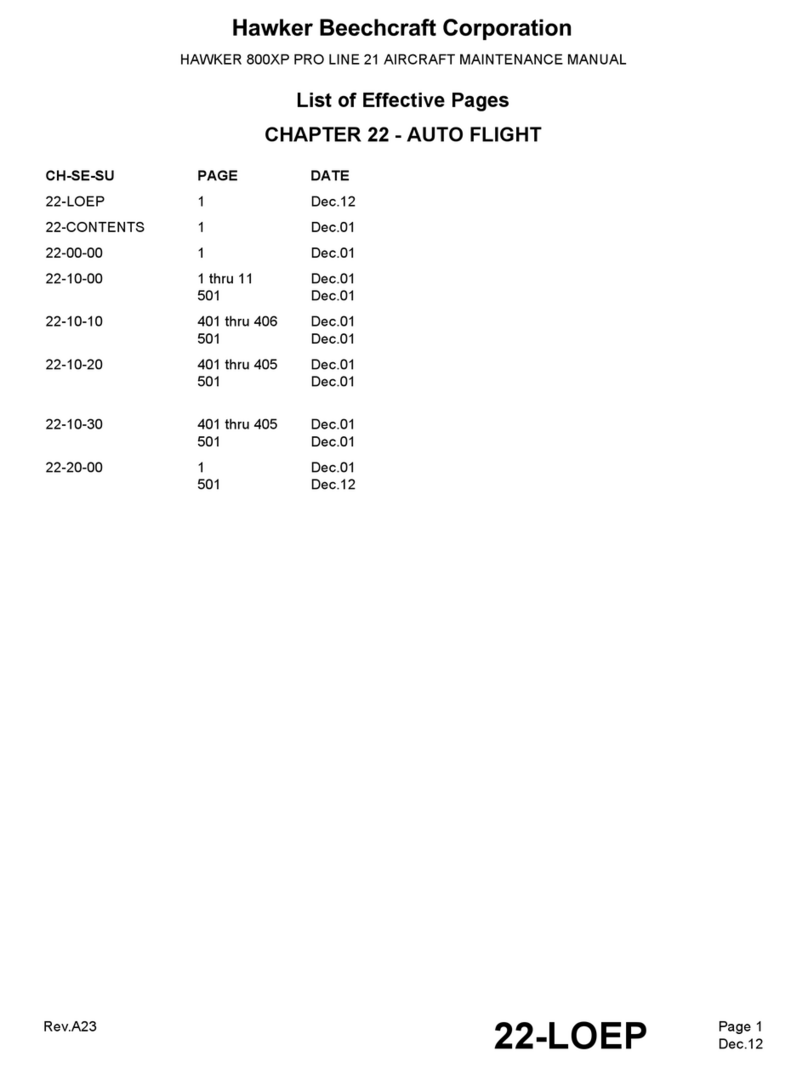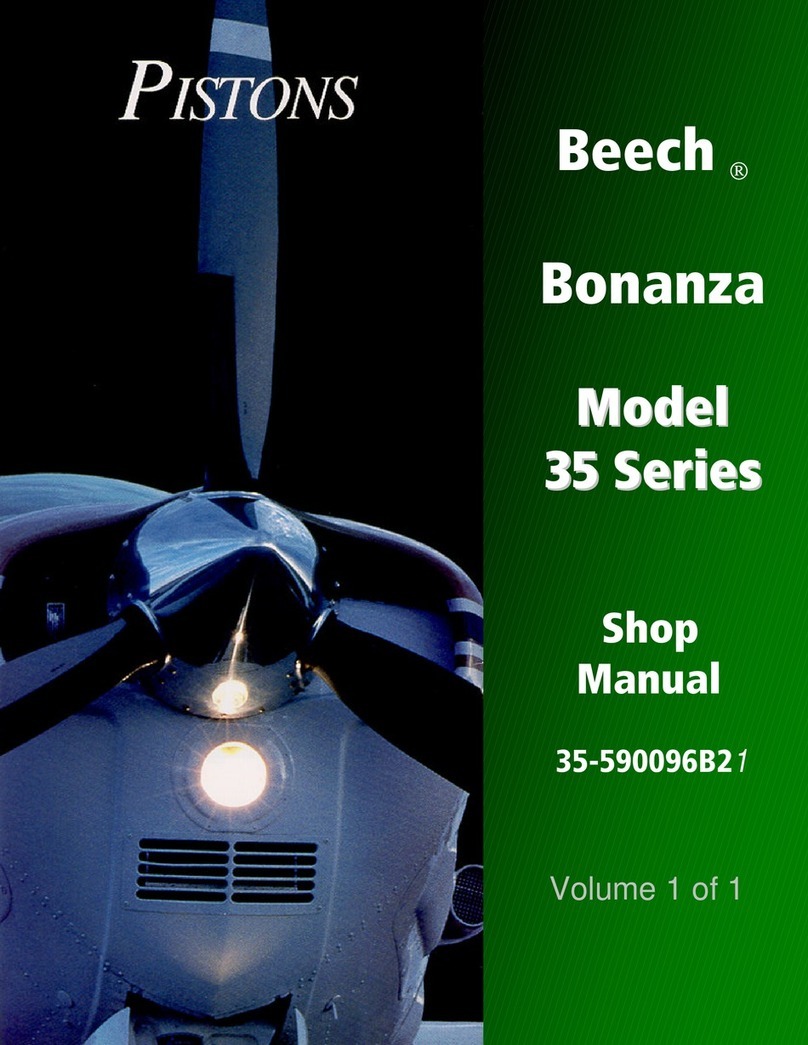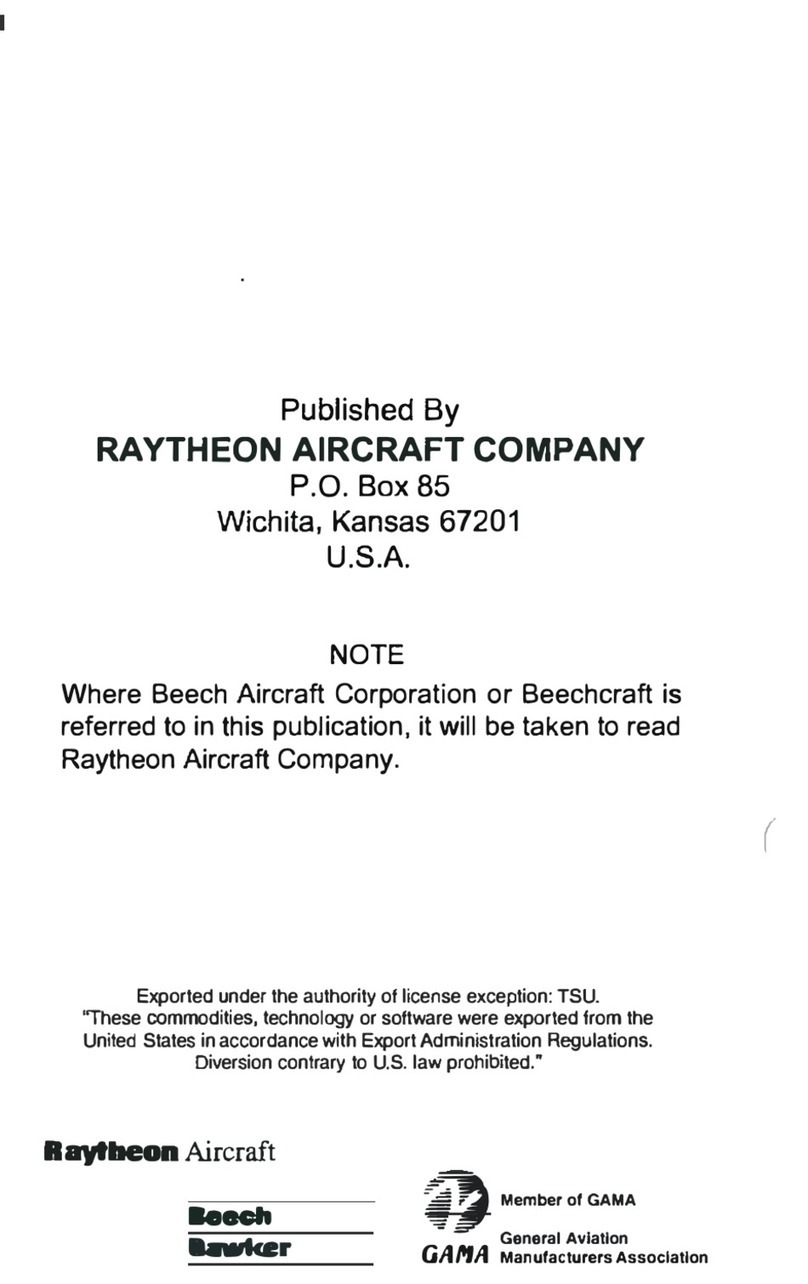
RAYTHEON PREMIER 1
CAUTION: When towing the airplane with the seats, cabinetry or avionics removed, compensate for the
component weight loss by adding temporary ballast to the airplane to maintain the center of gravity.
(1) Ensure that the nose gear strut and the main gear struts are not flat prior to towing the airplane (Ref.
Figure 201). Refer to LANDING GEAR SERVICING procedures to service the struts (Ref. 12-10-
25,301).
(2) Visually check the nose and main gear tires for proper serviceability and condition. Refer to
LANDING GEAR SERVICING procedures to service the tires (Ref. 12-10-25,301).
CAUTION: The torque link must be in the fully collapsed position before towing. Damage to the nose landing
gear door and torque link could occur if the link is not fully collapsed.
(3) Remove the safety clip (6) and quick release pin (7) and disconnect the lower end of the torque link
(5) from the nose gear fork (8). Rotate the torque link (5) and align it with the tabs on the upper torque
link. Reinstall the quick release pin (7) and safety clip (6) securing the torque link (5) (Ref. Figure 201).
(4) Attach the tow bar (3) (015, or 016; Table 201) to the nose wheel axle (1) and install the lock pin (2).
CAUTION: Do not wrap the tow cables around the main landing gear, as the gear can be damaged if
the towing adapter belt assembly is not used.
CAUTION: Each towing adapter belt assembly must be attached to the main gear as shown. Attachment at a
location other than that shown can result in damage to the landing gear.
(5) Wrap the towing adapter belt assemblies (2) (018, Table 201) around the main gear strut outer tube
with the padded side of the belt against the strut and the buckles (3) outboard. Thread the belt through the
buckles (3)
































